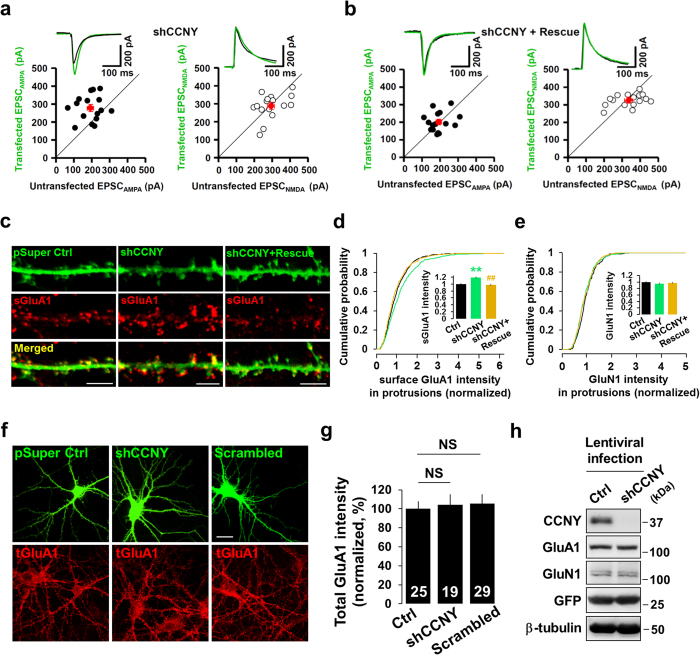Figure 2. Knockdown of CCNY enhances surface level of endogenous GluA1 and basal excitatory synaptic transmission.
(a) Knockdown of CCNY increases basal EPSCAMPA amplitudes with no change in EPSCNMDA amplitudes. Pairwise analysis on the effect of the CCNY shRNA on basal EPSCAMPA amplitude (•, recorded at a holding potential of −70 mV, n = 16) and EPSCNMDA amplitude (●, recorded at a holding potential of +40 mV, n = 16) in the same slice using the same stimulus position and intensity. Red symbols and error bars indicate mean ± SEM. (b) The CCNY shRNA-mediated enhancement of basal EPSCAMPA amplitudes was rescued back to the level of untransfected neurons by co-transfecting with shRNA-resistant CCNY-WT construct (●, n = 16) with no effect on EPSCNMDA amplitude (•, n = 16). Red symbols and error bars indicate mean ± SEM. (c) Confocal immunostaining of endogenous surface GluA1 in CCNY shRNA transfected or CCNY shRNA-resistant CCNY-WT (Rescue) co-transfected neurons. Scale bar, 5 μm. (d,e) Cumulative distribution of surface GluA1 (d) and GluN1 (e) in dendritic protrusions. Insets display means ± SEM of surface GluA1 (d) and GluN1 (e) intensity. n = 847, 829, 515 protrusions from n = 24, 27, 17 neurons, respectively in (d). n = 227, 361, 287 protrusions from n = 7, 11, 11 neurons, respectively in (e). **p < 0.005 relative to control. ##p < 0.005 relative to shCCNY. (f–h) Knockdown of CCNY does not change the total expression level of endogenous GluA1. (f,g) Confocal images of endogenous total GluA1 in CCNY shRNA or scrambled shRNA transfected neurons. Neurons were transfected at DIV13−14 and immunostained at DIV16−18. NS, not significant, Scale bar, 20 μm. (h) Cultured neurons infected with lentivirus overexpressing CCNY shRNA were applied to immunoblot analysis.

